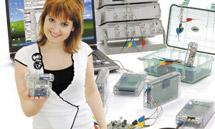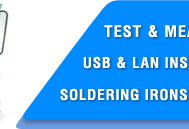







 |
||||
 |
    |
|||
 |
||||
 |
|
|||
|
Search
Log in
|
New AKTAKOM ATT-2593 Electrosmog meter
30.09.2015 The range of our AKTAKOM electrosmog meters has been replenished with a new model – ATT-2593. AKTAKOM ATT-2593 electrosmog meter is a handheld device used to safely measure electromagnetic field characteristics with isotropic method in the frequency range of up to 8 GHz. ATT-2593 is equipped with three-channel sensor which allows taking measurement along three axes simultaneously: X, Y, Z. We’d like remind that the electrosmog meter family includes also a well-known ATT-2592 model (frequency range: from 50 MHz up to 3.5 GHz). Similar to ATT-2592 electrosmog meter ATT-2593 can be used for measurement of the characteristics as follows: - electric field intensity: 20 mV/m…108 V/m. Resolution: 0.1 mV/m;
ATT-2593 has a sound signal function used when the measurement results exceed the limits which can be specified by user in advance. Just like ATT-2592 ATT-2593 is capable of recording the measurement results into memory (up to 99 measurement values). Besides it can hold and display maximal, average and maximal average values. User of ATT-2593 may set the calibration coefficient on his own. This is rather useful when for example the frequency, which the measurements are taken at, exceeds the frequency range limits (namely 10 MHz to 8 GHz). Naturally in this very case the measurements will be considered assessed. As a result AKTAKOM ATT-2593 can significantly extend the frequency range (max. freaquency is up to 8 GHz!!!) which AKTAKOM electrosmog meters can use to take measurements. Low price and perfect characteristics can make ATT-2593 a simple and efficient assistant when monitoring electromagnetic condition in manufacturing enterprises, your work place and residentials. Related Information: |